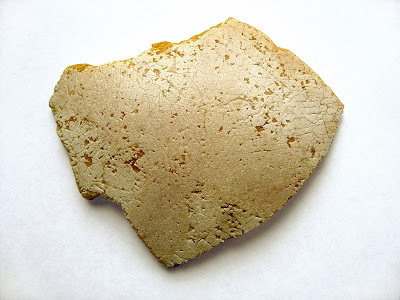“Boat Brand” fishing float. We have some fifty in our collection. A three-masted schooner sailing a sea above the "trade mark" sign. Why are they are the same salmon-y-pink color as the parts of Barbies and Kens we find? Who knows?
The "Lucky Brand" floats, which we also find, are pale beige. Lucky Brand has a circle logo with the image of two fish, Pisces horoscope style, swimming above and below one another. Now, just who decided what the things were going to be called? Is it wishful thinking?
Fishermen are a superstitious lot. There is some science to it all and a good fisherman tries for the repeatability of science. Set the bait, set the depth. But a friend of ours who worked for the Fisheries and Aquaculture Department of the World Bank told us a story of trying to introduce a little science to Malaysian fishermen. They scoffed—if Allah wants us to catch fish, we will catch fish. We pray to Allah for fish, not the World Bank.
We’ve found many floats still attached to their nets—nets weighing hundreds of pounds—too heavy to haul home. These pieces of fishing gear were once made of glass, cork or wood; now, like everything else it’s plastic. We’ve found two antique green-blue glass globes, so long at sea they are crusted with coral-like remains.


